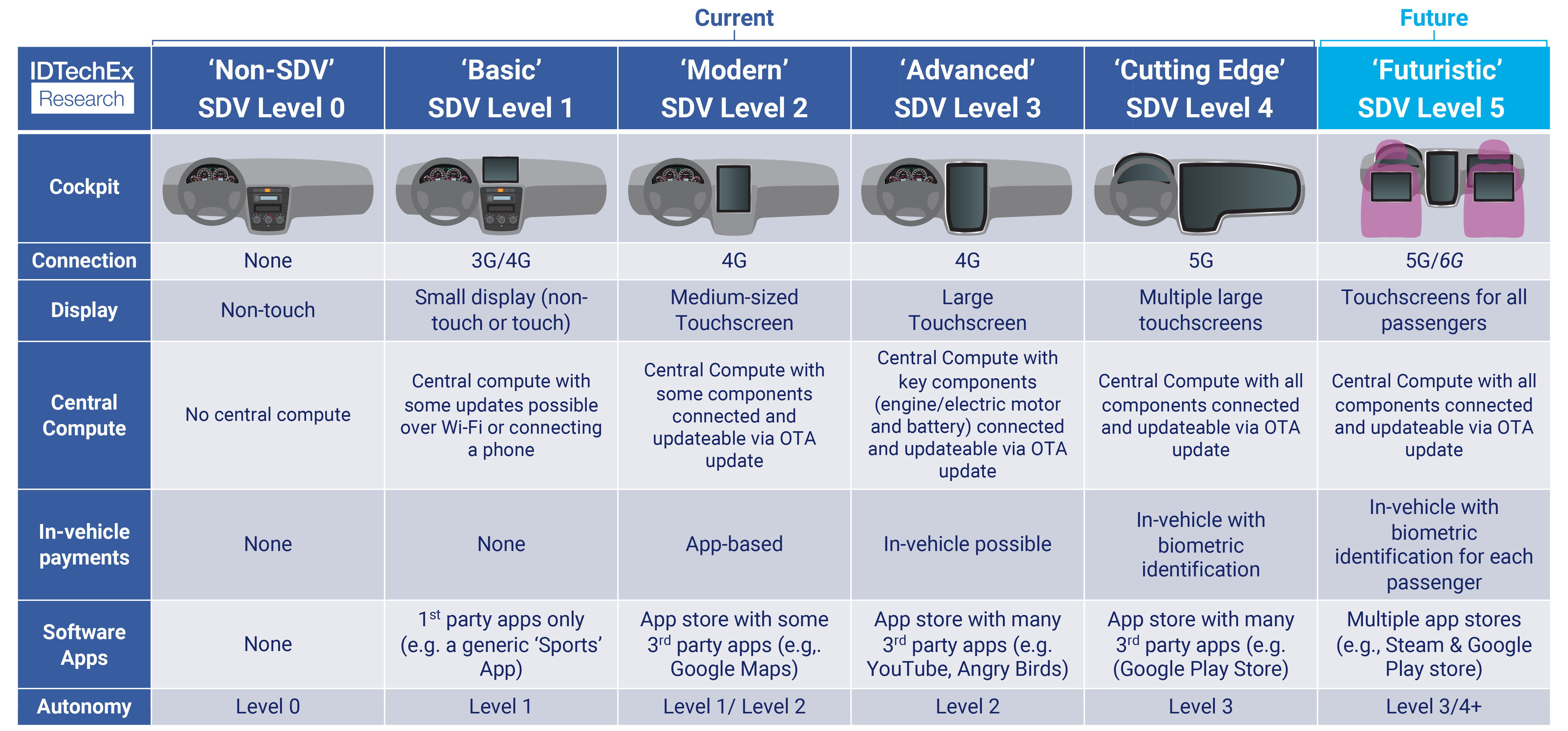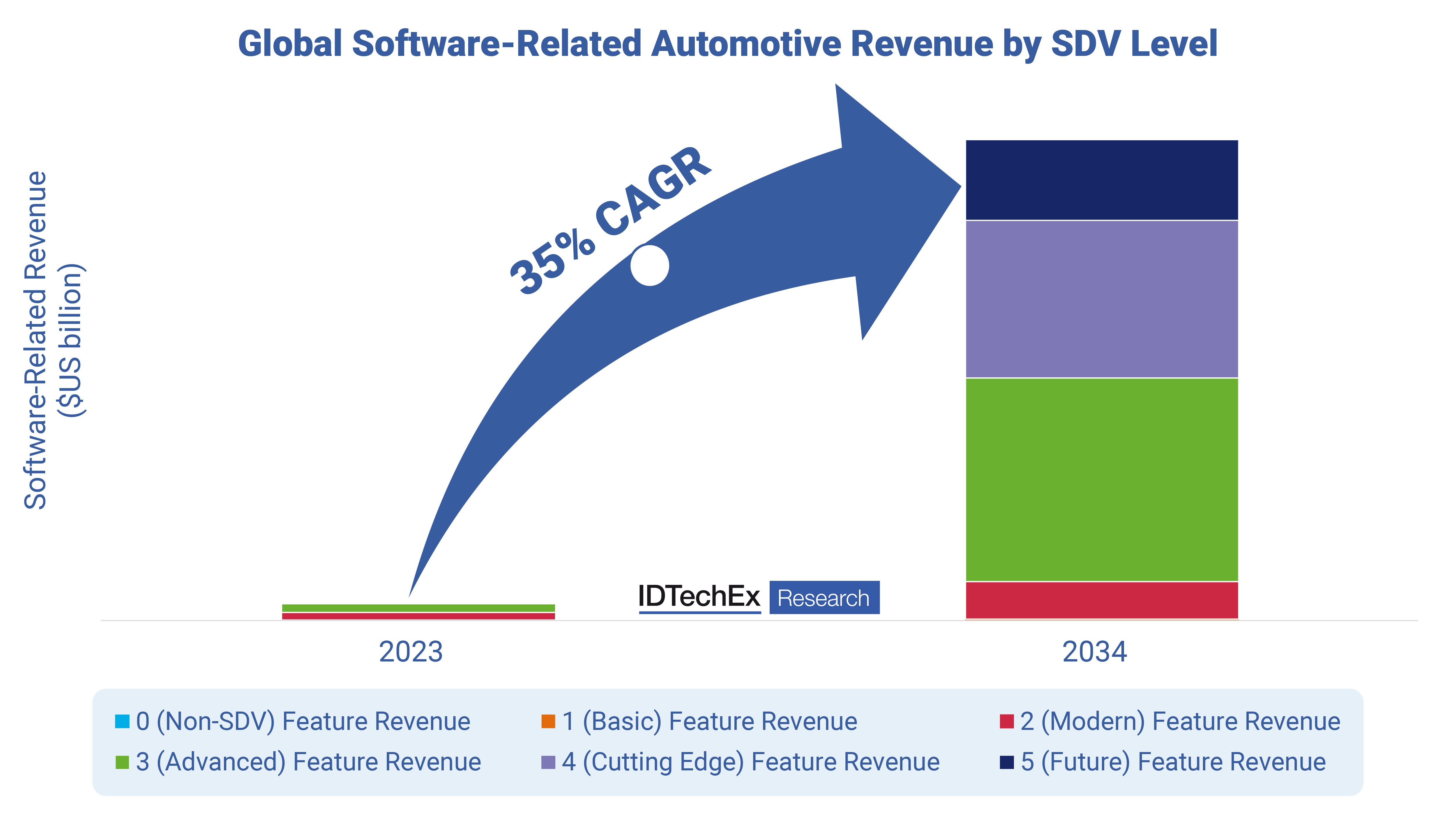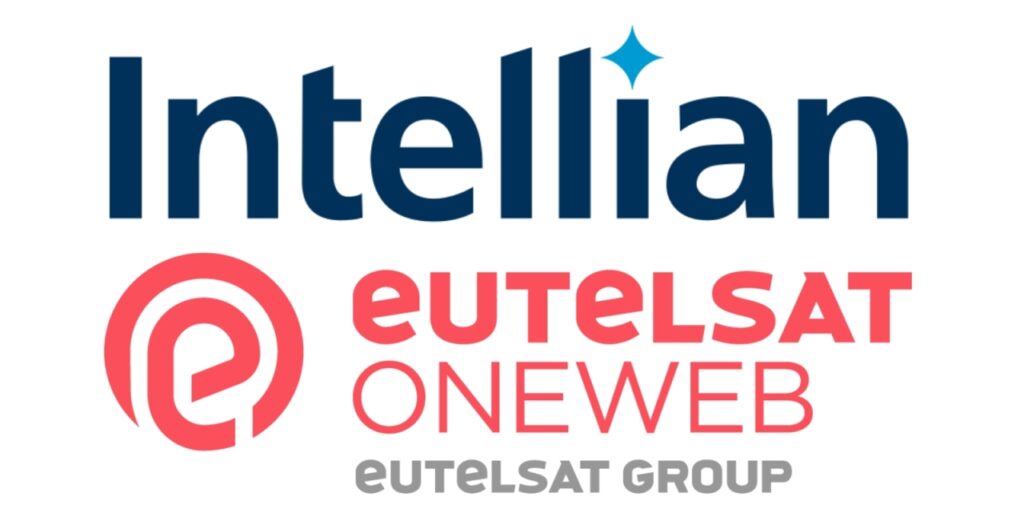
|
Author: James Falkiner, Technology Analyst at IDTechEx Connected and Software-Defined vehicles (SDVs) represent a new paradigm for automakers and consumers. Whereas older ICE vehicles were a conglomeration of 70+ Electronic Control units, kilometers of wiring, and many thousands of components, the new era of vehicles can be more centralized, connected, and convenient, bringing benefits to both the consumer and OEM. The most basic form of SDV is a vehicle where the user experience is affected in some way by the software in a vehicle. However, vehicles can become more ‘software-defined’ as the number of software-based features on the vehicle increases, unlocking new experiences such as allowing drivers to update or upgrade their vehicle via over-the-air updates or allowing passengers to watch on-demand movies on the go. Generally, a software-defined vehicle requires a constant cellular connection (4G or 5G), a large, touch-enabled screen, and a powerful central compute system that is also connected to the vehicle’s constituent components. Many SDVs also take advantage of third-party apps and in-vehicle payments to add more features and convenience to the user. Categorizing and comparing software-defined vehicles can be difficult, as almost every vehicle released in the last 5-10 years is arguably ‘software-defined’ in some way. By conducting an analysis centered around software functionality, IDTechEx gained a comprehensive understanding of the current status of software-defined vehicles. To create a way of comparing existing and future vehicles, IDTechEx has condensed their understanding into an SDV Level Guide, which compares vehicles’ software and software-critical hardware. This encompasses features such as a vehicle’s connectivity, compute, displays, and software system, allowing vehicles to be assigned a simple level for comparison purposes. The 2023 Tesla Model 3 is a good example of an ‘Advanced’ Level 3 SDV thanks to its 4G connectivity combined with its powerful central compute, which allows it to give users a smooth software experience and plenty of functionality such as infotainment and Advanced Driver Assist Systems (ADAS).
|
||

|
IDTechEx’s SDV Level Guide. Source: IDTechEx – “Connected and Software-Defined Vehicles 2024-2034: Markets, Forecasts, Technologies” |
||
|
The future connected vehicle uses not just a standard smartphone cellular connection but also potentially takes advantage of dedicated ‘V2X’ safety communication channels. This connection uses Wi-Fi or cellular-based technology (C-V2X) to communicate with other vehicles and traffic infrastructure. If regulation or safety standards mandate this technology, then V2X is set to become the ‘digital seatbelt’ of the future, promising to reduce accidents, improve congestion, and reduce emissions globally. Notably, China is making significant progress towards integrating V2X within vehicles on Chinese roads through the likely inclusion of V2X testing in their 2024 New Car Assessment Program (CNCAP). The US and other regions are actively assessing different forms of V2X technology, with IDTechEx forecasting that cellular-based C-V2X is set to become the primary method of Connected Vehicle communication by 2034. For other detailed Connected Vehicle forecasts, please refer to the new IDTechEx report, “Connected and Software-Defined Vehicles 2024-2034: Markets, Forecasts, Technologies”. What is the current SDV market status? The SDV market is emerging, with many potential players being cautious about how to monetize SDV features within the vehicle. Other players, such as Ford, Tesla, and BMW, are actively monetizing SDV features and, as a result, are generating significant revenue potential. BMW, for example, are offering owners of their i5 model up to US$150 a month in purchasable software upgrades and features, such as connectivity, real-time traffic information, and heated steering wheels. There is a wide discrepancy between the ability of various OEMs to provision SDV features. Many OEMs continue to equip their vehicles with limited and sluggish onboard compute, last generation 4G connectivity, and unoptimized software, preferring to rely on connecting a smartphone to the vehicle for infotainment and payments. By contrast, some OEMs, such as Mercedes and Cadillac, are focusing on a software-centric experience, facilitated by multiple screens (with functionality for both passengers and driver), with powerful compute, 5G connectivity, and support for in-vehicle payments to complete the in-vehicle experience. Connectivity is an important aspect of SDVs, with many OEMs offering 4G or 5G functionality for approximately US$10 a month, potentially generating US$120 a month per vehicle per year. Autonomy as a Service (AaaS) can also offer significant revenue potential, with OEMs such as Ford offering upgraded AaaS for approximately US$900 a year in some regions.
|
||

|
Global Software-Related Automotive Revenue segmented by SDV Level. Source: IDTechEx – “Connected and Software-Defined Vehicles 2024-2034: Markets, Forecasts, Technologies” |
||
|
IDTechEx's extensive primary research on the topic incorporates discussions with key players in the automotive industry, insights gathered from automotive conferences, details extracted from vehicle brochures, and analysis of historical trends. Drawing from this research, IDTechEx forecasts a 35% CAGR in automotive software-related revenue by 2034, with software-related revenue worth more than US$700 billion annually (US, 2023 prices) by 2034. To put this into everyday terms, IDTechEx forecasts that by 2034, the average new car buyer will be paying ~US$70 per month on software features. A full breakdown of the methodologies and data behind this figure is available in IDTechEx’s market research report on the topic, but generally speaking, the higher the SDV level, the more features are offered, and the more likely consumers are to decide to purchase or subscribe to the features offered within a vehicle. Alternative revenue streams will also be available from in-vehicle payments, the sale of actuarial data, and commission from in-vehicle app stores. IDTechEx’s brand new report, “Connected and Software-Defined Vehicles 2024-2034: Markets, Forecasts, Technologies”, provides a detailed analysis of Connected and Software-Defined Vehicles, looking at key technologies, trends, analysis across the value chain, major player analysis, and granular market forecasts. Below are the key aspects of this new report:
For further understanding of the Connected and Software-Defined Vehicle market, players, technologies, opportunities, and challenges, please refer to the IDTechEx report “Connected and Software-Defined Vehicles 2024-2034: Markets, Forecasts, Technologies”. To find out more about this new IDTechEx report, including downloadable sample pages, please visit www.IDTechEx.com/CSDV. On-demand webinar How Will Connected and Software-Defined Vehicles Impact the Automotive Market? James Falkiner, Technology Analyst at IDTechEx and author of this article, has recently presented a webinar on the topic – How Will Connected and Software-Defined Vehicles Impact the Automotive Market?. This webinar is available on-demand for a limited time. This webinar includes:
To find out more and view the on-demand recording, please click here. |





